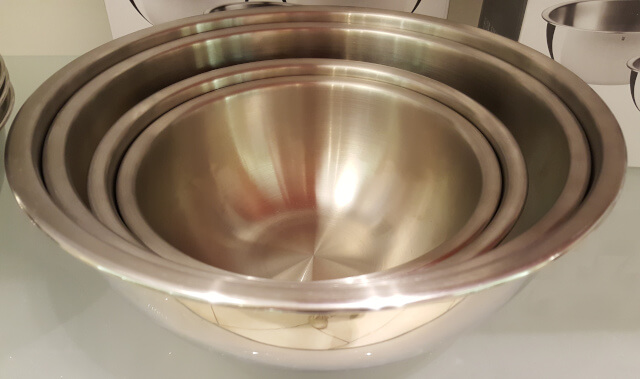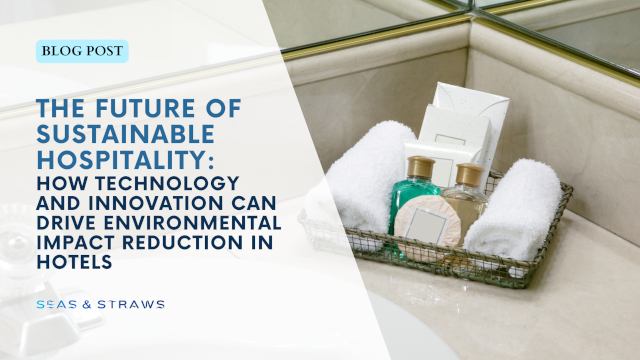- Home
- Plastic Alternatives
- Stainless Steel
Why Stainless steel products steal the show from plastic
Stainless steel products are common in construction, hospitals or professional kitchens. But do you know that they are also a great alternative to our everyday plastic household products? You can switch your plastic food storage containers with airtight stainless steel ones. You can finally stop carrying plastic water bottles home from the supermarket. You can dump the horrible plastic straw once and for all (and save a few turtles along the way) by using a stainless steel straw. And you can substitute the single-use plastic drinking cups with these recycled, reusable and recyclable stainless steel cups at your party or community event. Stainless steel is a long-living, versatile and safe material.
Here is what you need to know.
The following text is very technical, but it's important that you understand what stainless steel is made of in order to make the right choice for your containers, cups or water bottle.
What is stainless steel?
Metals are rarely used in their pure form, and stainless steel is no exception. It’s an alloy made of iron and a minimum chromium content of 10.5%. At this level, the chromium reacts with the oxygen to form a protective layer ("passive layer") around the steel. This layer envelops the entire surface and has remarkable properties: Firstly, it prevents further oxidation of the iron, making the steel resistant to corrosion (rust). Secondly, it is self-repairing. If the passive layer is scratched or destroyed, the chromium reacts again with the oxygen and immediately forms a new layer. This is why stainless steel will not rust, even if it’s scratched or damaged.
Apart from iron and chromium, nickel is added in some alloys to stabilize the structure. The more stable the alloy, the more resistant it is to heat and corrosion. Nickel also makes the steel resistant to acidity, which is why it is an important component in food grade items.
In addition to the three main ingredients iron, chromium and nickel, a number of other elements are added, such as manganese, silicon, copper, nitrogen, niobium, titanium, sulfur or molybdenum. There are over 150 different kinds of stainless steel, all of which have a unique combination of elements and unique characteristics.
Food grade stainless steel
When you buy your stainless steel containers, cups, bowls, plates or water bottles, there are 2 numbers you need to be aware of. The first is the grade, which refers to its quality, durability and temperature resistance. Grade 304 is what you want to look for. It contains 70% iron, 18-20% chromium and 8-10.5% nickel. It’s a high quality food grade stainless steel.
If you have a 304 food grade stainless steel product, the second number beside the grade is usually 18/10 or 18/8. They refer to the amount of chromium and nickel in the product. The first number is the percentage of chromium. The second number is the percentage of nickel in the product. So for example, 18/8 stainless steel consists of 18% chromium and 8% nickel.
Chromium binds oxygen to the surface of the product and forms a layer over the iron that prevents it from oxidation (rust). The nickel enhances the resistance to corrosion and to acidity. So, the higher the numbers, the more resistant the steel is and the higher its quality.
There is not really a difference in quality between the 18/10 and 18/8 stainless steels, however, people with an allergy to nickel might want to buy a product with less nickel content.
Products with almost no nickel (18/0) do exist, for example grade 430. Logically, those have a lower resistance to corrosion and temperature. You might also find products with grades of the 200 series. Like the 400 series, they contain no nickel, but here the nickel has been substituted with manganese. Both the 200 and 400 series are less expensive than 304 grade. While they are still food safe, they are less resistant to heat, corrosion and acidity and are generally of slightly inferior quality.
There are also stainless steel products with a higher amount of nickel. While the 304 grade consists of 8 - 10.5% nickel, grades 316 or 317 may have 10 - 15% nickel content. These kinds of stainless steel are very heat and corrosion resistant and are used in extreme environments. You will find them less often in the kitchen.
What about Aluminium?
Aluminium looks and feels like stainless steel but there is a big difference. Its composite structure is less dense, which makes it lighter, but also less strong and durable. Aluminium will dent when you drop it while stainless will not. It is also less heat resistant and reacts with certain food ingredients and acidic liquids. To prevent this, aluminium bottles or food containers have to be lined with an enamel or plastic layer, some of which contain the hormone-disrupting BPA. Aluminium is also less heat resistant and not dishwasher safe. I do not consider it a safe material to be used in combination with food.
Benefits of stainless steel
Stainless steel is a remarkable material and a great alternative to plastic. Here is why:
It is heat and cold resistant.
Plastic is proven to leach toxic chemicals like BPA or phthalates when heated, which is why it should never be used for hot foods or drinks. It also deforms when put under stress (such as being heated or frozen). Stainless steel will not do that. It is completely heat and cold resistant and does not leach any harmful chemicals into the food or beverage.
It is extremely hygienic.
The material needs no maintenance and is easy to clean simply by wiping it off. Unlike plastic, it has no pores and cracks which could harbor dirt or bacteria. This makes it the pefect choice in locations where strict hygiene conditions are necessary, such as hospitals, kitchens and food processing plants.
It is resistant to acidity.
Have you ever put tomato sauce into a plastic food container? The container will be red and oily afterwards and you will never get it perfectly clean again. That's because the acidity in the tomato sauce attacks and dissolves the plastic. The chemicals in the plastic will then migrate into the food and from there into our bodies. Yummy. Stainless is inert to acidity.
It does not stain or corrode.
Stainless steel is safe for liquids of any kind. While plastic water bottles can only be used once and should never be exposed to heat, stainless water bottles do not leach anything and can be used again and again. They last for a lifetime, if you want. Imagine the amount of water bottles you keep away from landfills and the oceans by switching to a reusable steel bottle. Let alone the amount of toxins you keep away from your body. If you buy an insulated bottle, it will also keep your drink hot or cold for hours.
It does not impart or absorb flavors and odors.
If you buy a high quality food grade item, there will be no such thing as the "steel taste" either.
It dos not break easily.
If you treat it well, the stainless steel product can last for generations, which makes it one of the most sustainable materials available.
Its satin smooth surface looks great in every kitchen.
It can also withstand fire for a long time.
Stainless steel products
Stainless steel is an incredibly versatile material. Since it is an alloy, different elements with different characteristics can be combined, resulting in a huge range of applications:
- Architecture: modern buildings use stainless steels for cladding, roofing and facades. The maintenance costs are low and since stainless is not easy to destroy, it is a popular material in public transport, ticket machines and street furniture.
 A modern building made of steel and glass
A modern building made of steel and glass- Cutlery and kitchenware: you will find a great variety of stainless steel in modern kitchens. Think of sinks, saucepans, exhaust ducts, dishware and cutlery. Now you can add stainless bottles, food storage containers, salad bowls and even straws to your collection. Wouldn't that look great?
- Food production: thanks to its inertness to flavor, corrosion resistance and easiness to clean, stainless steel is used in most food processing plants and factories.
- Chemical, processing and oil & gas industries: it is also widely used in other industries. You can find stainless tanks, pipes, pumps and valves, plants, offshore oil rigs, harbour supports and ships propellers.
 Stainless steel tanks and pipes
Stainless steel tanks and pipes- Medical applications: surgical instruments and some medical implants are made from steel, just as artificial hips, orthopaedic beds, cabinets and examination machines.
- Automotive: Stainless steel becomes more and more important in the car industry. Exhaust systems, trim and grills are made from this material.
Sustainability
Okay, here is the downside: The production of stainless steel is very polluting and energy intensive. Minerals like iron, chromium and nickel are non-renewable resources. They have to be mined which destroys ecosystems and pollutes water and soil. Transport and manufacturing have a big carbon footprint.
On the other hand, plastic is made from fossil fuels like oil and natural gas. They, too, are non-renewable and just like minerals, they have to be extracted from the earth, which, again, destroys ecosystems. Oil and gas drilling also releases a slew of toxic chemicals and the manufacturing process in the petrochemical plants is even more harmful to the environment.
So, both production processes are highly polluting and environmentally harmful. What about the remaining life cycle of steel and plastic?
Plastics are non-biodegradable. They never vanish, and yet, 50% of all plastics are produced for single-use. Only 8% are recycled, the rest ends up in landfills or in the ocean, where it remains for 400 to 1000 years, releasing toxic chemicals and harming wildlife.
Stainless steel, too, is almost indestructible. Unlike plastics, however, it is designed for longterm use. One stainless steel bottle that you refill again and again can replace thousands of single-use plastic water bottles each year. The US alone discards 130 million bottles every day! 40 billion bottles end up in landfills or in the ocean each year. If every person bought just one stainless steel bottle, we could get rid of a big chunk of our plastic pollution problem. If every person bought just one reusable stainless steel straw, we could avoid that 500 million straws are are dumped each day in the US. And so on....
And even if your bottle or food container does not last a lifetime, stainless steel products are 100% recyclable. The different minerals can easily be separated from each other and recycled infinitely with no loss in quality. On average, the recycled content of a stainless steel product is 60%, the stainless steel used in architecture is even recovered at 90%. That is so much more than the 8% of plastics that are recycled.
Stainless steel should never end up in landfills because its life cycle is truly circular.
It's your turn
Do you use any stainless steel products like food containers, water bottles or even straws at home? Let me see your pictures!
For more information visit the following sites:

















